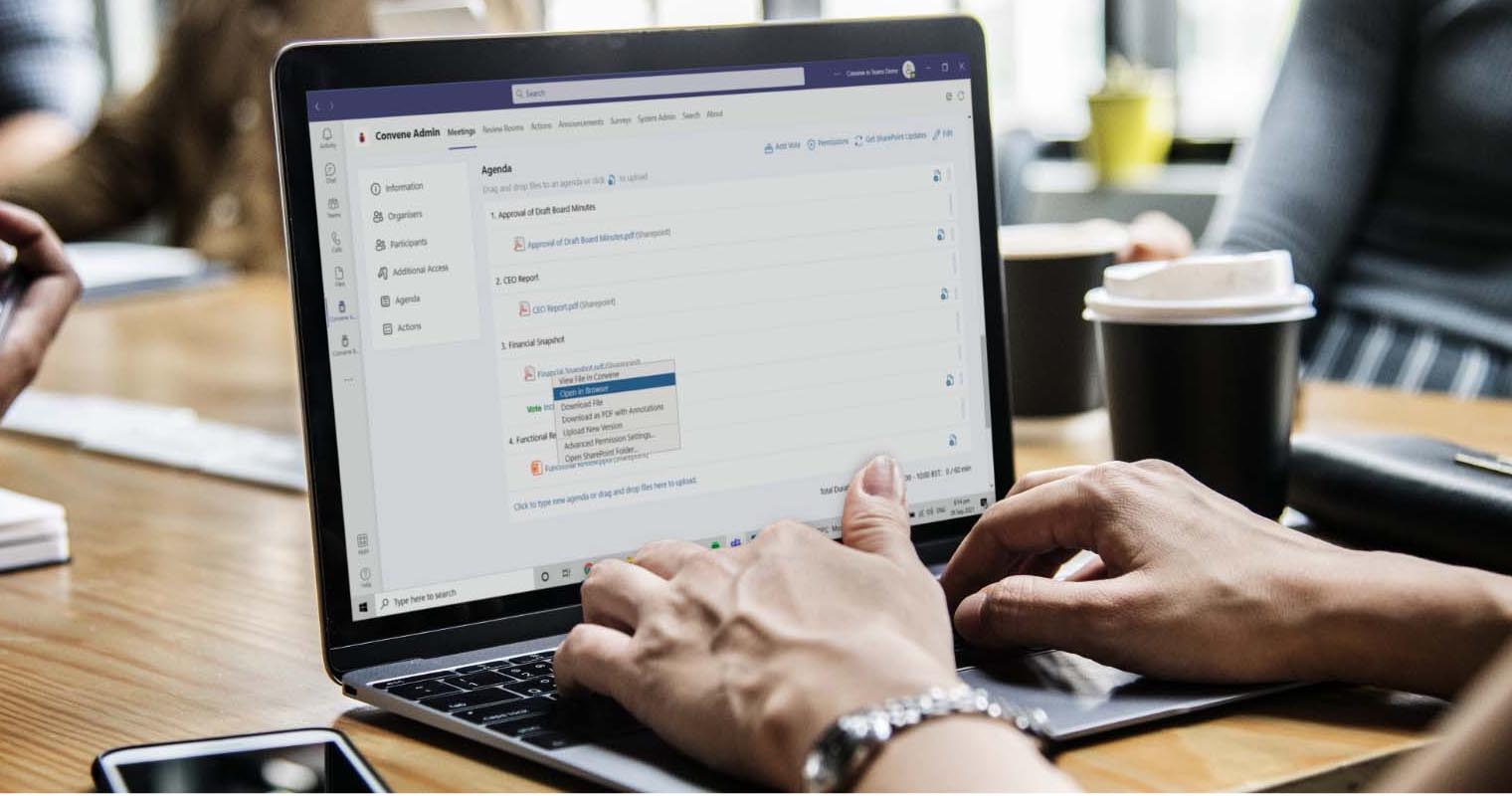Hybrid and virtual meetings consume more work hours as organizations continue navigating the new normal. Microsoft reported that since 2020, the time that Teams users spend every week for meetings has escalated by 252%. With the massive reliance of organizations on remote meetings, it is only apt to ensure that no crucial information and solution from meetings become vague or forgotten.
With this, generous effort and attention must be given to the post-meeting process. It is the stage where the long discussions and brainstorming during the meeting are set into motion. Specifically, the time when feedback and notes from the meeting are applied, actions are tracked and accomplished, and decisions are implemented.
Meeting documentation acts as a definite account that contains the history of the matters that have been discussed during the meeting, as well as the actions that must be completed afterwards. The challenge now is tracking post-meeting progress in the Microsoft space, especially when valuable meeting information has been scattered on separate digital platforms.
The Value of Traceability, Accountability, and Actionability in Meetings
Meetings can span from a few minutes to long hours, even if there is a defined agenda. To maximize meetings, it is important to ensure that no important point raised is wasted and that crucial feedback and solutions agreed upon are noted for implementation.
Meeting documentation enters as an important process so that pertinent information is traced, assigned persons are held accountable, and delegated tasks are acted upon.
Traceability
Although all participants are expected to dedicate their full attention during the meeting, it is always convenient to have materials to look back on the actual discussions that transpired, instead of solely relying on memory. Through this, participants will always have a tangible reference when some information becomes hazy. Bottlenecks may arise, however, when meeting information and documents are all over the place.
Vital time can be misspent by accessing different platforms just to retrieve information. If participants need to remember discussions and actions from the meeting, they would have to access the email thru Exchange or Outlook for the agenda items, then they would go to SharePoint to review the meeting minutes. If there were important comments exchanged through chat, it may require more time to search them in the Teams channel. This can highly derail post-meeting progress, which should be the stage of actions and solutions.
If meeting details are all over the place and across multiple platforms, it can get increasingly stressful for participants if they can’t swiftly locate the files they need. Participants should be able to locate all information, such as meeting attendance, schedule, notes, and minutes — preferably all in one place — to avoid wasting time and effort.
Accountability
Meetings serve as an avenue to establish the course of action for each agenda item. However, if participants become increasingly occupied after the meeting, they would certainly need a quick reference and reminder on the action items that have been assigned to them.
If there is no documentation readily available, participants will have to rely on their respective notes for the tasks they are assigned to complete. Participants may end up having differing records of the tasks, leading to duplicate, missed, or misaligned outputs.
This is especially disruptive when the course of action is a step-by-step process, requiring the accountability of multiple people or teams. Minutes can provide an instant reminder for the assignees and the rest of the participants, helping them identify who was designated to complete the task prior to and after theirs. In this way, participants will not be confused about whom to coordinate with to perform the assigned work.
A task management platform or action tracker can also contribute to increased efficiency in performing tasks. This can serve as a clear resource that can prevent participants from passing on or overlapping tasks, as it clearly identifies the person expected to complete the assignment along with the due date.
Actionability
Apart from assuring that action assignees are identified and held accountable, meeting documentation can help push the participants into actually getting the action items in Teams done. For instance, the action list can indicate the deadline and progress points to give assignees the opportunity to manage the assignment with other tasks.
Organizers carry on the responsibility of reminding and following up with the participants on pending action items. However, this part of the work can be troublesome if they don’t have the proper platform. For instance, to check on the progress of the important tasks, they have to reach out using different channels to get to the assignees, while considering that users may be more active through chat, while others prefer to be contacted via email. This will be easily streamlined if organizers and assignees have a mutually accessible platform where follow-up reminders can be sent and received.
Documenting the progress of each task in the post-meeting stage is also important. It reflects how much of the plans have been transformed into action, and how many results the meeting has produced. It emphasizes why the meeting mattered and provides a tracker on how much work the team has completed since the meeting.
Complete Meeting Documentation with Convene in Teams
Organizations should focus on acquiring the right platform that can efficiently record and store all information from meetings. A solution like Convene in Teams (CiT) integrates board management capabilities within Microsoft Teams. It is equipped with streamlined post-meeting tools that can facilitate a complete documentation process.
By enabling organizations to regulate all meeting documentation on just one platform, CiT also helps ensure that all information remains properly stored, secured, and traceable.
Record all actions completely and permanently

CiT recognizes that meeting information should be easily accessible, which is why it provides an archive and repository that acts as central storage, where all crucial meeting materials can be accessed. Consolidate all meeting files and information — attendance, discussion, action items, notes, and assignments — in one location. It also integrates with SharePoint, paving the way for seamless access to more documents and live editing within Teams. In CiT, participants can easily access the records and data they need without leaving the system or tapping others for help to recollect information.
CiT allows users to smoothly transition documentation from live to post-meeting at just one interface. As soon as the meeting is finished, notes can be accessed while pending tasks and action items noted on the documents can be monitored and followed up — all within Microsoft Teams. In this way, organizers no longer have to navigate several applications just to monitor every action and documentation. Users do not have to worry about forgetting any detail or assignment, which consequently improves post-meeting accountability and productivity.
Assign and track action items
As part of achieving accountability in Teams, CiT has an action tracker where meeting participants can delegate, align, and set deadlines for tasks within the platform. This helps easily identify and assign the people who will perform the action items, eliminating the roadblocks and miscommunication that can spring from imprecise delegation.
Users can also easily track the status of every single task assigned directly from Teams. In cases where an action item has been pending for a while, automatic reminders can be set in CiT, so assignees will be notified of completing their action items on time. This is in recognition that assignees may also balance multiple commitments after the meeting, and might just need a nudge to rebound.
Access meeting history
From time to time, participants may need to review the discussions and comments they encountered during the meeting. In these moments, the traceability of information is of utmost importance. CiT addresses this need for meeting participants as it is equipped to record and store all meeting files and information, allowing users to retrieve the information anytime needed.
CiT also has a comprehensive audit trail feature that can be used to track the activities of each meeting participant. System administrators will be aware of the actions that each participant has done, including if they have accessed the meeting files, added notes, or downloaded the documents. This can help contribute to achieving transparency and accountability during the post-meeting process.
CiT: Your Meeting History at Your Fingertips
Virtual and hybrid meetings have transformed into a modern medium for organizations where important ideas are exchanged, comments are raised, and problems are solved. The best way to maintain the value of all the information gathered throughout meetings is to document them and set them into action. CiT streamlines the elaborate meeting documentation process by providing the tools to take minutes and track action items, as well as by offering a distinct location to ensure the accessibility of all pertinent meeting files.
Through CiT, users no longer have to open multiple digital platforms just to trace a detail they heard from the meeting. Any tendency for blame-shifting and low productivity is also prevented because CiT provides all users with an easily accessible record of what they need to do and when it is needed, demanding the accountability of participants as well as their subsequent action. It serves as a fully equipped solution that ensures no significant information is discarded and no action item is overlooked post-meetings.
Track everything in your meetings from start to finish with CiT. Discover more about the features of CiT and how you can incorporate this one-stop platform into your post-meeting documentation processes.
Mikaela joined the Convene team as a Proposal Writer which exposes her to the evolving and specific board meeting management needs of organizations worldwide. She utilizes her experience in writing about technology and working with various stakeholders to provide tailored content that helps promote productivity and efficiency. She graduated with a bachelor's degree in Development Communication from the University of the Philippines - Los Baños.







